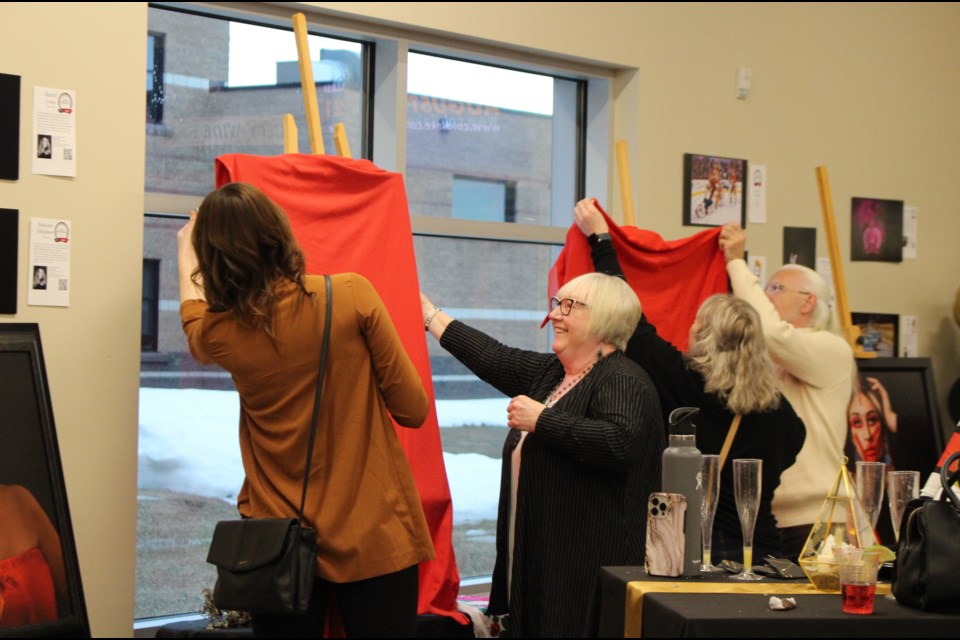COLD LAKE – Roughly a hundred people gathered in a portion of the Cold Lake Energy Centre’s hallway to take in an Artist Talk and the first Lakeland showing of the Best of Alberta Photography Exhibition on Wednesday evening.
However, the real draw of the evening was the soft unveiling of the MMIW RED Series by local photographer Susie O’Connor.
The series features 24 models, aged three to 83, from the Lakeland and beyond, including public figures such as Métis Nation of Alberta President Audrey Poitras.
However, only five portraits from the series were unveiled on April 20, the rest will be showcased on May 5 – Red Dress Day.
Prior to the unveiling, O’Connor talked about the impact of the COVID-19 pandemic and how it shifted the operations of her photography business, Images Studios.
She also talked about the tragic and widely reported death of George Floyd, a black man who died from a lack of oxygen caused by a police officer, that occurred shortly after the first pandemic lockdown in the US.
Following this event, O’Connor said she felt helpless, but through this tragedy she was introduced to terms such as ‘ally’ and ‘anti-racist.’
“I learned that it is not enough to not be racist,” said O’Connor.
She expressed that action needs to be taken by everyone to combat prejudice faced by Indigenous Peoples and people of colour – acts of anti-racism.
The seed that would eventually lead to the MMIW RED series was planted by a local high school student posing for his graduation photos, she continued.
For the student’s final photo, he placed a handprint over his mouth with red paint to honour Indigenous stolen sisters.
The red handprint over the mouth has become a symbol for Murdered and Missing Indigenous Women and Girls (MMIW). The MMIW movement and red handprint draw attention to ongoing discrimination and violence that has led to the disproportionally high rates of missing and murdered Indigenous women, girls, two-spirit people, and men, across North America.
Months later, O’Connor would connect with Gabrielle Whiskeyjack, a community advocate from Elizabeth Métis Settlement and Saddle Lake Cree Nation, who has worked tirelessly to promote Red Dress Day across the Lakeland.
Speaking to the attendees, Whiskeyjack said that many people will often tell her that they want to collaborate in order to expose racial injustices and create a platform for Indigenous voices to be spotlighted.
Most of these expressions of interest rarely come to fruition, she noted. The MMIW RED series is one example of a collaboration that did.
Whiskeyjack continued by reading some of the names of women and girls who had been murdered or gone missing in Canada.
“A lot of these women come from the Lakeland,” she added.
Following her statement people from the audience began saying names of women and girls they knew who had been murdered or went missing. A sombre silence followed.
As the coverings for the portraits were removed, giving audience members the first look at the MMIW RED Series, local musician Fawn Wood’s song Remember Me played in the background.
Portraits from the MMIW RED Series, as well as a Red Dress installation will be displayed along Millennium Trail in Cold Lake starting from 4 Wing to the New Imperial Inn, on the May 5, from 1-6 p.m.



